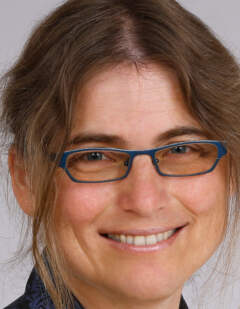Projekt
Design options for economically viable biodiversity-promoting milk production systems in the organic model regions of Freiburg and Ravensburg
How can milk production be economically viable and promote biodiversity at the same time? Together with practice partners, the GOBIOM project is developing solutions to this question. Well-founded scientific analyses and methods are combined in various work packages with professional agricultural advice and cooperation with dairy farms.
How can milk production be economically viable and promote biodiversity at the same time? This question is being investigated by the Institute of Applied Ecology together with Grünweg Projektmanagement und Beratung and the Institute for Rural Structural Research at the Goethe University Frankfurt am Main in the GOBIOM project.
Initial situation & research questions
Species-rich grassland is of great importance for biodiversity in Germany. It is increasingly under threat for various reasons. One of the reasons is the decline in the number of dairy cows as utilizers of grassland growth. The increase in the performance of dairy cows and the intensification of use play a role here, as does the abandonment of use, particularly in marginal locations. In addition, it is difficult for dairy farms to be both biodiversity-friendly and profitable under the current conditions. Against this background, the project is dedicated to the research question: How can dairy production be economically viable and promote biodiversity at the same time?
Project approach & procedure
GOBIOM focuses on two model regions in Baden-Württemberg, which are exemplary for the threat to species-rich grassland due to abandonment – the model organic region of Freiburg – and intensive use – the model organic region of Ravensburg.
The work is divided into five closely interlinked work packages. Together, they make it possible to develop solutions for the desired transformation from different perspectives: A system analysis allows the identification of obstacles, success factors and system levers for the transformation as well as the economic evaluation of operational biodiversity measures. A further component comprises the implementation of biodiversity measures with dairy farms in the model regions and the development and testing of a system for monitoring them. In addition, methodological approaches are being further developed and tested in practice to enable the integration of biodiversity aspects into life cycle assessments. This should allow dairy factories, for example, to map biodiversity services at product level. In several workshops, design approaches and future visions for biodiversity-friendly milk production will be developed together with regional stakeholders. The project will conclude with the development of governance recommendations.
Project objectives & expected results
The overall objective is to develop approaches that support the transformation of dairy-producing systems in the desired direction – economically viable and biodiversity-friendly.
In order to achieve this objective, the following results are aimed for: Firstly, an optimized advisory concept for dairy farms supplemented by a monitoring concept. Among other things, a tool for the economic assessment of biodiversity measures at farm level will be developed for this purpose. On the other hand, a method is to be provided with which biodiversity aspects can be integrated into life cycle assessments at production level and taken into account by dairy farms in the form of a management tool. A brochure compiles the recommendations for action for regional stakeholders and is supplemented by a guideline with governance recommendations for political stakeholders at EU, federal and state level.
The project results will be fed back into science and practice via various channels.


